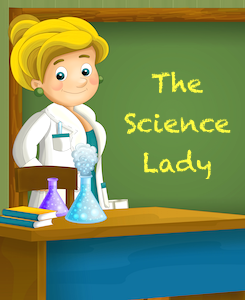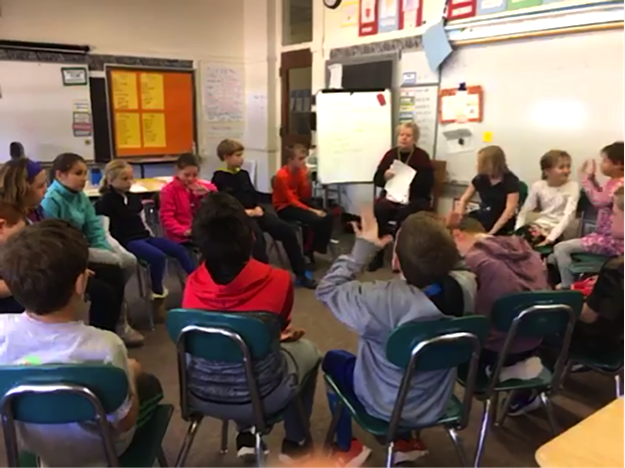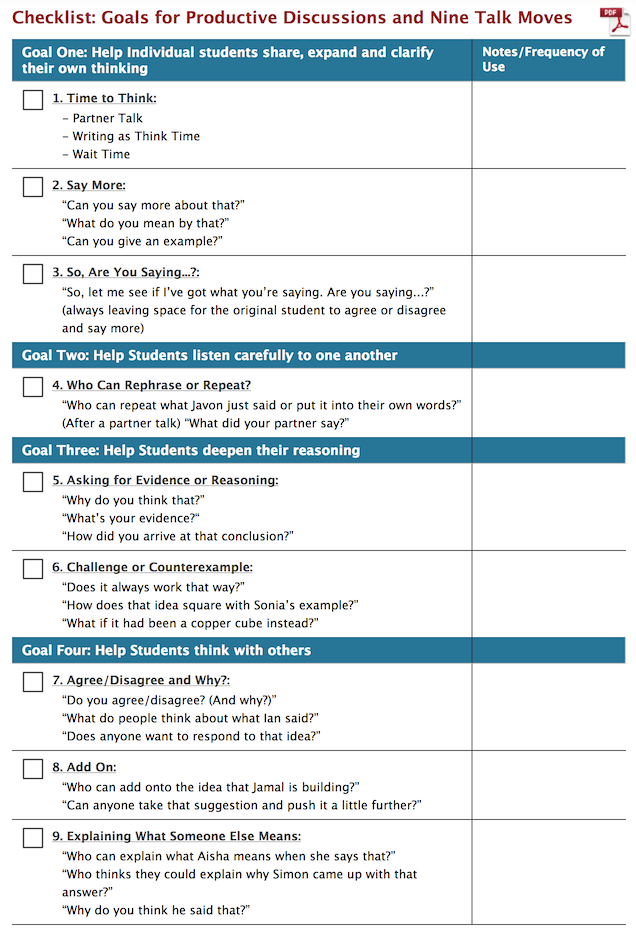School Leadership 2.0
A Network Connecting School Leaders From Around The Globe
Making “Science Talk” a Natural Part of Learning
Making “Science Talk” a Natural Part of Learning
BY KATHY RENFREW · PUBLISHED 10/30/2018
A MiddleWeb Blog
 Speaking and listening are often the forgotten skills in English Language Arts, not to mention science. Talk is critical to student learning in science.
Speaking and listening are often the forgotten skills in English Language Arts, not to mention science. Talk is critical to student learning in science.
From my perspective, as learned from Simon Sinek, it is always very important to “start with the why.” In the statement above I made a claim that science talk is critical to student learning in science. Next comes the why.
Talk allows our students the chance to share their thinking, make claims, support their claims with evidence and explain their findings. Students learn from one another when they are engaged in science talk. Science talk provides them the opportunity to ask questions, build on each other’s ideas or change their thinking completely.
When students are engaged in meaningful science talk, I like to say they are in the process of “multiple draft thinking.” Talk is fluid. It triggers our the ability to be flexible in our thinking, to bend and twist our ideas until they make sense.
Talk is imperative to sense-making in science. There are so many complex concepts that our students need to investigate, think deeply about their discoveries, and then build the explanations that provide evidence of the understanding. (Here’s the research.) Talk needs to become a natural part of learning in our science classrooms.
Now’s the Time to Start Talking
Early in the school year is the time for teaching students how to be full participants in science discourse. Being a full participant means being part of a whole class discussion about a science topic. You can see this taking place in my classroom here.
Participating in a science talk means actively listening, asking questions, and building on the ideas of others. It might mean hearing someone else’s thinking and changing our own ideas. This is not stealing ideas or copying but utilizing the thinking of the whole group. Again, using my own phrase, it’s a collective form of “multiple draft thinking.”
In order for this type of learning and dialogue to happen in our classrooms, we need to believe our students – all of our students – can do it. Sometimes that means that we as teachers need to change our own way of thinking. Our mindset will make the difference.
Teachers who facilitate successful science talks believe that when students have the chance to share their own thinking and hear the ideas of their peers, their scientific reasoning skills will grow. These teachers know that given time to practice the students will gradually become more independent and adept. Just as we practice “gradual release” in many of our reading programs, we must do the same in science.
Effective Dialogue Requires Some Scaffolding
Sometimes we make the mistake of assuming that the students come to us with listening and discussion skills. Some will, but not everyone. It’s up to us to work with students, to actively teach the skills of speaking and listening in science. I am happy to share that there are many tools available to help us do that. We will talk about the tools as we use them.
So let’s dig into what science talk might look and sound like beginning early in the year. How might we introduce our students to the importance of these shared conversations about science topics?
Just as the why was important for us, it’s even more important for our students. We begin by explaining that scientists in the real world talk to each other all the time. They use many different formats as we will throughout the year, beginning with the seminar format where we all sit in a circle on the same level so we can have eye contact and make optimum listening a priority.
Next we let our students know we are going to provide them the scaffolds to help them begin to have these critical conversations in science. One of the most important tools I have used to facilitate science talk is “Talk Moves”.
[Download a PDF of this checklist]
These talk moves are critical scaffolds for the teacher as well as our students, but we cannot just hand them out and expect kids to instantly use them independently. We have to teach students what meaningful talk looks like and sounds like.
We need to model, ask students to role play each of the “talk moves” and describe what it means to them. We can show them video clips of what a productive science talk sounds like (see the resources at the end of this post). We might share transcripts of successful science talk and have students practice the literacy skills of “notice and note.” (See, for example, this student circle discussion about volume and the accompanying video transcript.)
By providing these supports, we are building our students’ confidence that they can “talk like scientists” and expressing our own belief that they can do this with opportunity and practice. We want our students to be engaging in the practices of scientists and engineers, and science talks can help us do that.
When the students are talking with each other, trying to answer the driving questions, they may be arguing from evidence, or they may be asking or defining a problem. They may be constructing their explanations of the concepts or developing solutions for a problem. They are certainly obtaining, evaluating and communicating information.
We want our students investigating, thinking, talking, reading and writing like scientists and engineers. When we provide the opportunity for them to participate in serious conversation during a science talk, we are helping them grow stronger in the practices of scientific professions they might one day want to pursue.
Some Other Resources to Get You Started
Here are several resources available to assist you in making science talk a reality in your classroom. If you have questions or resources of your own to share, please use the Comments section below!
The Inquiry Project, supported by the National Science Foundation, has been a multi-year effort by TERC and Tufts University to strengthen science teaching in upper elementary grades (3-5), emphasizing Science Talk and the NGSS standards. Teachers in grades 4-8 will find much of value in the Project’s research about group science discussions – including the numerous videos showing teachers leading talks.
►Talk Science Primer – Download this primer, developed by educators in the TERC Inquiry Project. It does a great job of summarizing the why and how of using academic conversation in your classroom.
►Library of Resources – This video library from the TERC Inquiry Project includes reflections by teachers who use science talk; talk strategies; scientist talks; and a variety of classroom discussion examples (grades 3-5). Click and watch.
Learn more about Making Thinking Visible Through Talk and Argument in this excerpt (Chapter 5) from the book Ready, Set, Science! Putting Research to Work in K-8 Science Classrooms.
STEM Teaching Tools – Download this useful PDF of the Talk Activities Flowchart. There is a downloadable PowerPoint available that supports the flowchart. (Source)
STEM Teaching Tools – These Talk Resource Tips & Tools include Talk Resource Cards, Partner Conversational Supports and Pre- and Post-Talk Writing Supports.
JOIN SL 2.0
SUBSCRIBE TO
SCHOOL LEADERSHIP 2.0
Feedspot named School Leadership 2.0 one of the "Top 25 Educational Leadership Blogs"
"School Leadership 2.0 is the premier virtual learning community for school leaders from around the globe."
---------------------------
Our community is a subscription-based paid service ($19.95/year or only $1.99 per month for a trial membership) that will provide school leaders with outstanding resources. Learn more about membership to this service by clicking one of our links below.
Click HERE to subscribe as an individual.
Click HERE to learn about group membership (i.e., association, leadership teams)
__________________
CREATE AN EMPLOYER PROFILE AND GET JOB ALERTS AT
SCHOOLLEADERSHIPJOBS.COM
New Partnership
Mentors.net - a Professional Development Resource
Mentors.net was founded in 1995 as a professional development resource for school administrators leading new teacher induction programs. It soon evolved into a destination where both new and student teachers could reflect on their teaching experiences. Now, nearly thirty years later, Mentors.net has taken on a new direction—serving as a platform for beginning teachers, preservice educators, and
other professionals to share their insights and experiences from the early years of teaching, with a focus on integrating artificial intelligence. We invite you to contribute by sharing your experiences in the form of a journal article, story, reflection, or timely tips, especially on how you incorporate AI into your teaching
practice. Submissions may range from a 500-word personal reflection to a 2,000-word article with formal citations.




You need to be a member of School Leadership 2.0 to add comments!
Join School Leadership 2.0